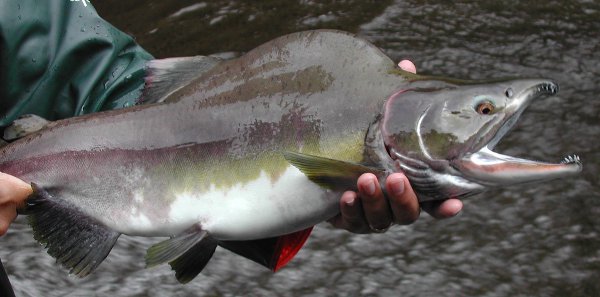Alaska Salmon Season Highs and Lows
 Salmon season is always an anxious time for fisherman, as everyone waits to see how accurate catch predictions will be. But this year has proven to be quite disappointing as Alaska’s statewide salmon catch is expected to fall 31 percent below pre-season predictions. All species of salmon catches are down except for sockeye.
Salmon season is always an anxious time for fisherman, as everyone waits to see how accurate catch predictions will be. But this year has proven to be quite disappointing as Alaska’s statewide salmon catch is expected to fall 31 percent below pre-season predictions. All species of salmon catches are down except for sockeye.
According to the Alaska Department of Fish and Game, the total shortfall can be blamed on the poor returns of one specific species, pink salmon, to the Gulf of Alaska. Initial forecasting predicted a pink salmon catch of approximately 70 million, but current numbers are at 38 million. This small salmon species, also known as “Humpback Salmon” for the distinctive large hump that males develop on their backs during spawning season, usually weigh just 2 to 6 pounds as adults. Since the fish are flakey and low in oil content, they are generally processed and sold as value-added products such as salmon patties or frozen marinated steaks. Most pink salmon is canned, which yields a final product with a long shelf life that can be easily transported.
It was expected that the pink salmon run would be low this year, as the fish returning are the offspring of those that spawned in 2016, a devastatingly low year for pink salmon. Alaska issued a federal disaster declaration in several regions due to the low 2016 harvest and was subsequently issued $56 million in aid. However, these 2018 yields are far lower than anyone predicted.
Sporadic pink salmon run times have also been problematic for fishermen. Salmon often spawn in one long continuous stream, but this year the salmon came in waves. This “start and stop” spawn cycle created more uncertainty for fishermen, as they were unable to accurately predict exactly when to harvest. There is also speculation that the “warm water blob” that has plagued the North Pacific is a possible reason for the low returns.
On a positive note, Bristol Bay has been in the news with a 2018 run that is the second largest sockeye salmon catch on record with 42 million harvested so far this season. Demand has been high among consumers for this product as a successful branding campaign by BBRSDA has promoted “Bristol Bay Sockeye Salmon” across the country. Approximately 350 retailers, including QFC stores in Seattle, HEB supermarkets in Texas, and New Seasons Market in Portland, have signed on to carry the branded harvest.
The total salmon harvest in Alaska for the season currently sits at 105 million total. The Sockeye harvest is at 50 million after a prediction of 52 million, the Coho harvest is at 2.2 million after a forecast of 6 million, and the Chum catch is at 15 million after a forecast of 21 million.
The ADFG updates their “Blue Sheet” statistics every Friday between May and September. To learn more about all harvesting by species or region see ADFG Commercial Fishing.
 Maritime Injury Law Blog
Maritime Injury Law Blog

